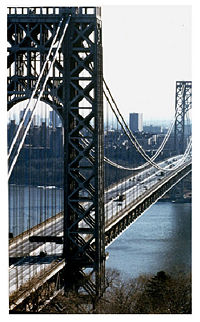Public goods
In economics a public good is any commodity which is non-rivalrous and non-excludable.[1] Non-rivalrous means that one person's utilization or enjoyment of the commodity does not prohibit another person from enjoying or using it. A good example of a non-rivalrous commodity would be a radio station, because one person listening to his radio in the car doesn't prevent anyone else from listening to the same station. Non-excludable means that it is impossible (or very expensive) to exclude people from using the commodity. Clean air is an example of a non-excludable commodity because it would be very difficult to try and control how much air people breathe.
While a pure public good is strictly non-rivalrous and non-excludable, the more general usage of the term is that public goods should conform to both properties to a reasonable extent. For example if everyone tries to use a bridge at the same time, there will be a traffic jam, but the bridge is still considered a public good because once it has been built so that one person can use it, the marginal cost of allowing everyone to use it is zero.[2] Similarly, a tollbooth can be constructed to exclude people from using the bridge. Strictly speaking a bridge is a marketable public good or club good, but because of the expense involved in collecting tolls, many bridges are operated by the government as public goods.
References
- ↑ Pindyck, R and Rubinfeld, D (2001) Microeconomics ISBN 0130165832
- ↑ Hirshleifer, J and Hirshleifer, D (1997) Price Theory and Applications ISBN 0131907786
